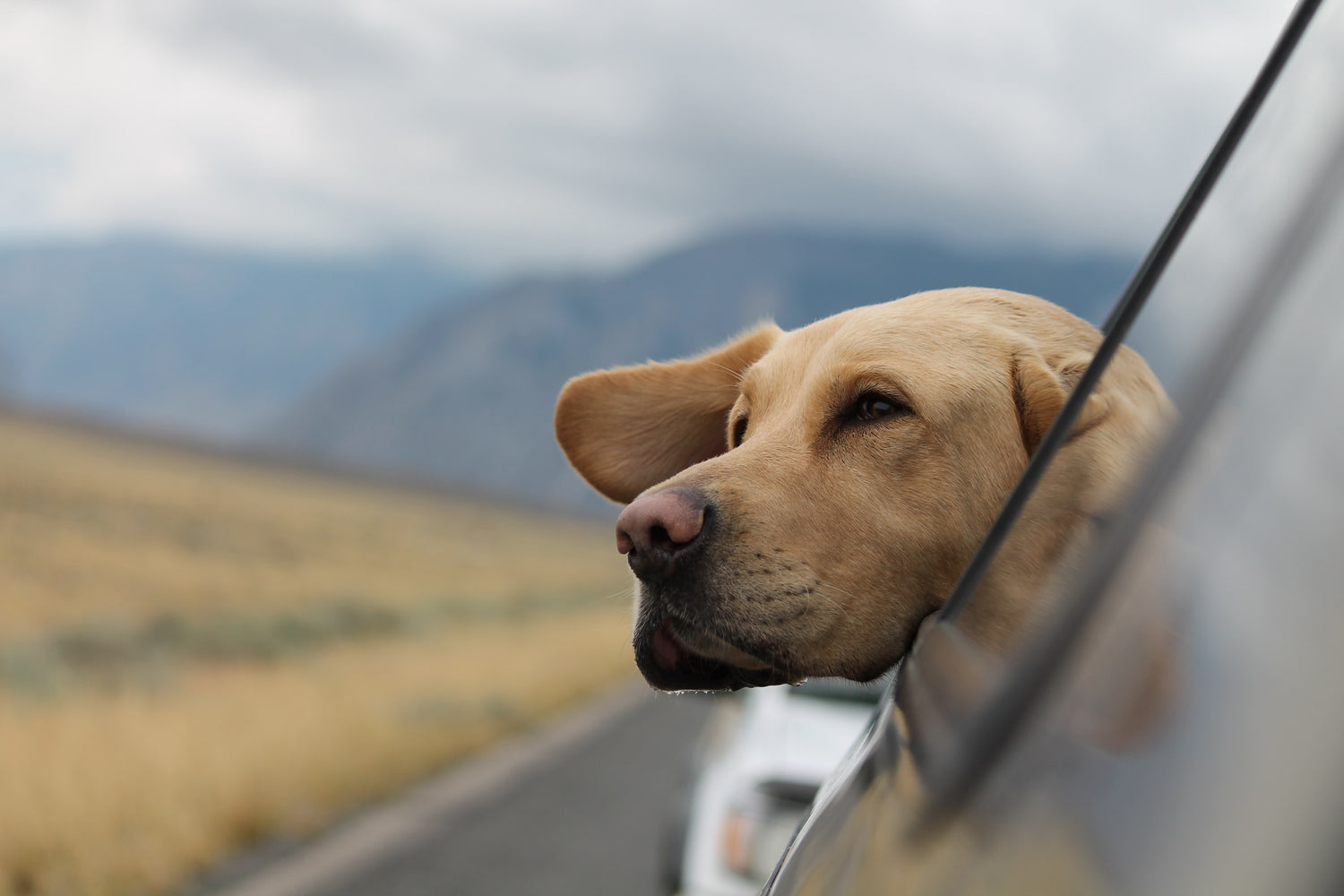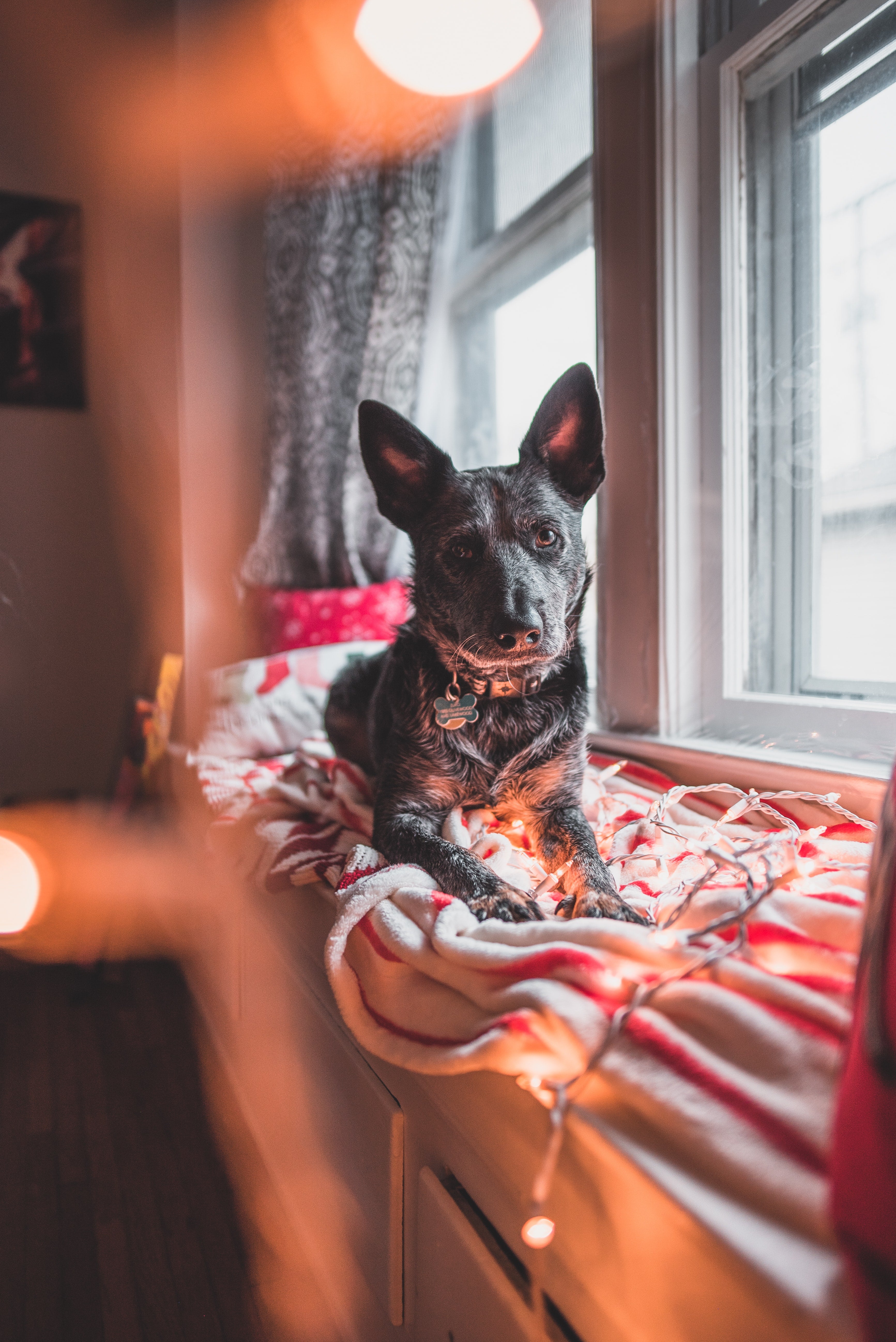Moving is stressful for us humans–the planning, the packing, the physical labor! But what about our dogs? It's understandable that Fido might get freaked out when suddenly the furniture is piled up in the corner, and his favorite things are in boxes.
Dogs can’t comprehend why their environment is changing; they just know it’s unsettling. While there is no fool-proof, stress-free way to move, there are things we can do to ease our pet’s anxiety and help them transition into their new homes.
Whether you’re moving down the street or across the country with your dog, here are five things you should know to help keep them safe, comfortable, and happy!
1. Make Sure Your New Location is Dog-Friendly!
It goes without saying that you should ensure your dog is welcome at your new home. While you may have already gotten the green light from your new landlord or HOA that pets are allowed, did you read the fine print?
Unfortunately, some places may present as dog-friendly but have restrictions on breed or size. Some cities also have local ordinances on certain breeds or requirements like health certificates, pet registrations, or rabies tags.
To avoid surprises, check for any restrictions or requirements that may exist in your rental agreement, HOA paperwork, or local laws.
2. Prepare Your Dog For The Big Move
In the days leading up to your big move, your dog will most likely know something is up. At best, they will be cautiously curious. At worst, they may turn into little anxious balls of fur! Help ease their anxiety by keeping them as close to their regular routine as possible. This means keeping their walking and feeding times as normal as possible. Dogs are very good at telling time!
As you pack, try to leave out some comfort items for them. Their bed is the most important, but also some favorite toys and/or blankets. Give them a safe space to relax away from all the clutter and noise. If they use a crate, great! Leave that out for them. If they don’t and you’re planning to use one during the move, start getting them used to it as soon as possible.
Ensure that your dog’s vaccines, parasite preventatives, and microchip are all up-to-date at least a few weeks prior to your move. If they are not, schedule a visit with your veterinarian before you move.
3. Moving Day Must-Dos!
Let’s face it–no matter how well-planned, moving days are usually chaotic! You may have movers coming in and out, lots of noise, doors will be left open, and it will be sensory overload for your dog. Some people choose to leave their dog with a trusted friend, family member, or pet sitter for the day. If that’s not possible, be sure to keep your dog safe and out of the way of movers.
Moving Day Checklist for Dog Owners
- Keep dogs in a crate or separate room
- Make sure they are wearing ID tags
- Give them a distraction like a puzzle toy or frozen Kong
- Put a radio on with some soothing music to drown out some of the commotion
- Use a calming pheromone like Adaptil (or other products as recommended by your vet)
4. Safety and Comfort on Long Trips
Is your new home hours away? You’ll want to be prepared for that long drive. If your dog is not acclimated to car rides, start getting them used to drives in the weeks leading up to your move.
If your dog is overly nervous or prone to getting carsick, talk to your veterinarian about options. Some dogs may need medication. Nothing will make an already stressful move worse than a vomiting dog in your backseat!
You’ll want to keep your dog safe and comfortable on the road. Ensure they have a secure harness or collar, ID tags, and leash. The OllyDog reflective leash is perfect for this and will keep your dog visible on those night stops!
Road Trip Checklist for Dog Owners
- Dog Safety Restraint (dog seat belt, car seat, crate, etc.)
- Dog Bed or Crate Liner
- Travel Water Bowl
- Car Seat Cover
- Comfort Items (favorite blanket, toy, etc)
- Poop Pick-Up Bags
- Treats
- Pet First Aid Kit
- Towels or Pet Wipes and cleaning products (in case of accidents or post-rest stop cleanups)
- Copies of their Veterinary and Vaccine Records
If your drive is long, don’t forget to pack your dog’s meals and a travel bowl. Apps like Bring Fido can help you find dog-friendly hotels, restaurants, parks, and other accommodations along your route.
Remember that your dog may need more potty breaks than usual. All that excitement, plus the movement of the car, can lead to nervous peeing and tummy troubles.
5. Helping Them Adjust To Their New Home
Once you arrive at your new home, you can breathe a sigh of relief. You made it past the hardest part! Now it’s time to unpack, unwind, and enjoy your new digs. Just be sure to give your dog some time to adjust to its new surroundings.
Give your dog some familiarity by setting up their bed, bowls, toys, and other comfort items right away. Use treats and positive reinforcement as they explore their new setup.
See how they react to their new surroundings and check for any hazards or things that may make them uncomfortable. Things like stairs they aren't used to or tile when they had carpet can take your dog some time to maneuver around. Throw rugs, anti-slip mats, and gates can all be helpful if your dog is struggling with mobility on new flooring or stairs.
Be extra patient on walks as your dog sniffs and explores its way around a new neighborhood. It may take a few weeks before they are fully comfortable and confident in their new environment.
Soon you and your dog will be enjoying making new memories in your new home!
Written by Lauren Rey, October 2022




Leave a comment
All comments are moderated before being published.
This site is protected by hCaptcha and the hCaptcha Privacy Policy and Terms of Service apply.